H261 to OGGConvert H261 to OGG, H261 to OGG Converter |
 |
| Home | Getting Started | Download | Buy Now! | Screen Shots | FAQ | Support | Contact |
OGG Video Converter converts H261 files to OGG format easily and quickly. The software is an ALL-IN-ONE audio converter that supports more than 100 audio and video files. OGG Video Converter supports batch conversion, and is full compatible with 32-bit and 64-bit Vista and Windows 7.
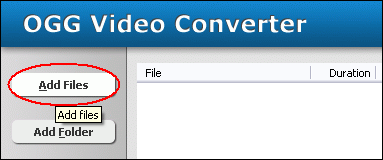 Click "Add Files" to choose H261 files and add to conversion list. 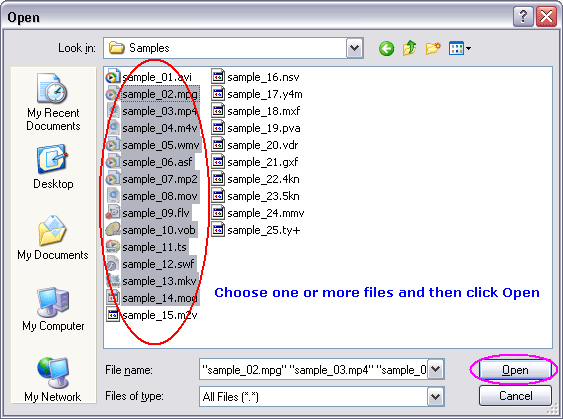 Choose one or more H261 files you want to convert and then click "Open". OGG Video Converter will open the files and get information such as width, height, frame rate, video bit rate, audio sample rate, audio bit rate, audio channels, and then list the information at conversion list. 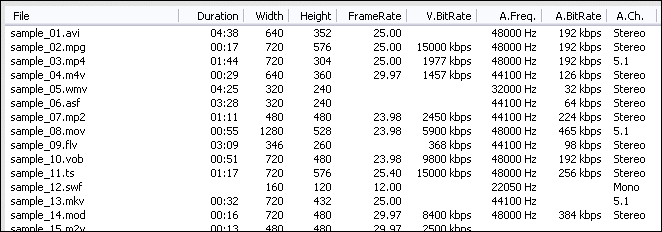
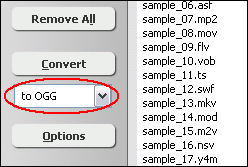
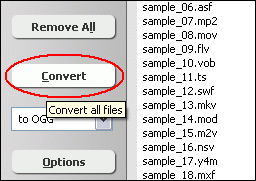 Click "Convert" to convert H261 files to OGG format.  The software is converting H261 files to OGG format. 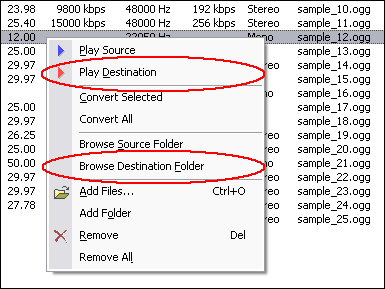 Right-click converted WMA file and choose "Play Destination" to play the outputted WMA file; choose "Browse Destination Folder" to open Windows Explorer to browse the WMA file. What is H261? The H.261 standard actually only specifies how to decode the video. Encoder designers were left free to design their own encoding algorithms, as long as their output was constrained properly to allow it to be decoded by any decoder made according to the standard. Encoders are also left free to perform any pre-processing they want to their input video, and decoders are allowed to perform any post-processing they want to their decoded video prior to display. One effective post-processing technique that became a key element of the best H.261-based systems is called deblocking filtering. This reduces the appearance of block-shaped artifacts caused by the block-based motion compensation and spatial transform parts of the design. Indeed, blocking artifacts are probably a familiar phenomenon to almost everyone who has watched digital video. Deblocking filtering has since become an integral part of the most recent standard, H.264 (although even when using H.264, additional post-processing is still allowed and can enhance visual quality if performed well). What is OGG? The name "Ogg" refers to the file format which can multiplex a number of separate independent free and open source codecs for audio, video, text (such as subtitles), and metadata. In the Ogg multimedia framework, Theora provides a lossy video layer, while the music-oriented Vorbis codec most commonly acts as the audio layer. The human speech compression codec Speex, lossless audio compression codec FLAC, and OggPCM may also act as audio layers. The term "Ogg" is commonly used to refer to audio file format Ogg Vorbis, that is, Vorbis-encoded audio in the Ogg container. Previously, the .ogg file extension was used for any content distributed within Ogg, but as of 2007, the Xiph.Org Foundation requests that .ogg be used only for Vorbis due to backward compatibility concerns. The Xiph.Org Foundation decided to create a new set of file extensions and media types to describe different types of content such as .oga for audio only files, .ogv for video with or without sound (including Theora), and .ogx for applications. Because the format is free, and its reference implementation is non-copylefted, Ogg's various codecs have been incorporated into a number of different free and proprietary media players, both commercial and non-commercial, as well as portable media players and GPS receivers from different manufacturers. Convert H261 to OGG Related Topics: MMF to OGG, 3GPP to OGG, DTS to OGG, ROQ to OGG, MPGA to OGG, MVI to OGG, VFW to OGG, GXF to OGG, 3G2 to OGG, SMK to OGG, F4A to OGG, AVI to OGG, SHN to OGG, ALAC to OGG, STR to OGG, WMD to OGG, AMV to OGG, GSM to OGG, M2V to OGG, HDTV to OGG, WM to OGG, XVID to OGG, MP1 to OGG, M2T to OGG, EAC3 to OGG, EVOB to OGG, MPA to OGG, VCD to OGG, 3GP to OGG, MJ2 to OGG
|
| Home | Getting Started | Download | Buy Now! | Screen Shots | FAQ | Support | Contact | Links |
| Copyright © 2007-2014 Hoo Technologies All rights reserved. Privacy Policy |